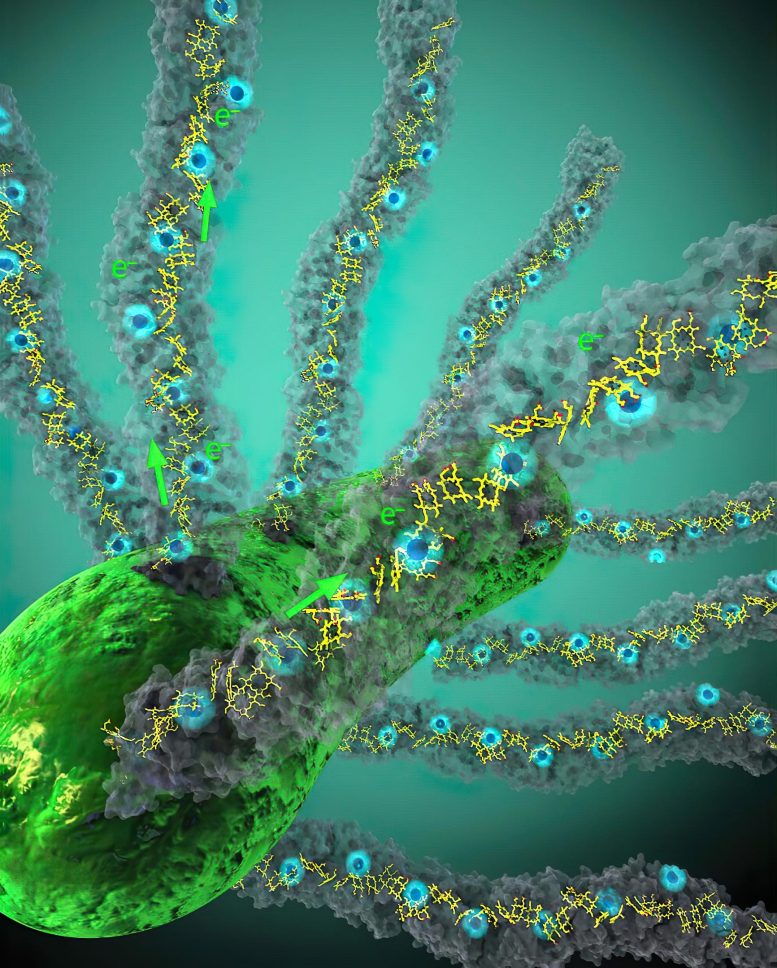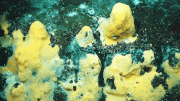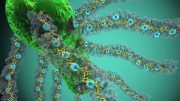
Geobacter in green, nanowires in gray, and embedded hemes are shown in yellow with electrons in blue. Credit: Sibel Ebru Yalcin, Nikhil Malvankar,and Ella Maru Studio
An international research team is investigating nanowires in methane-producing and consuming microbes to understand how these filaments enable electron exchange, which determines methane production or consumption. The team’s diverse expertise will help unravel the complex pilus machinery involved in nanowire production.
The rising temperatures threatening life on our planet are caused in part by microbes that produce 50% of atmospheric methane, a gas 30 times more potent than CO2 at trapping heat. Surprisingly, another kind of microbe combats these rising temperatures by consuming up to 80% of methane released from ocean sediments. How are some microbes methane producers and others methane consumers?
To solve this puzzle, an international team of researchers, Nikhil Malvankar (Yale University, USA), Carlos Salgueiro (NOVA University of Lisbon, Portugal), Lisa Craig (Simon Fraser University, Canada), and Olivera Francetic (Institut Pasteur, France), have received one of the 25 Human Frontier Science Program Awards for cutting edge, high-risk high-reward projects.
The team will study the wire-like filaments made by electricity-producing Geobacter, which resemble methane-eating microbes. These “nanowires” allow microbes to exchange electrons with their partners, with the direction of current determining whether methane is produced or consumed.
Nanowires were first reported over two decades ago and until very recently were thought to be type IV pili. However, Malvankar lab recently revealed that the conductive filaments of Geobacter are in fact polymers of cytochrome proteins, which contain metal-coordinating hemes that line up to create a continuous path along which electrons travel. The role of the Geobacter pili may actually be to assemble and secrete these cytochrome nanowires.
The team’s collective expertise in nanowires (Malvankar), heme proteins (Salgueiro), type IV pili (Craig) and bacterial secretion (Francetic) will help unravel how the complex pilus machinery helps microbes produce nanowires.









great